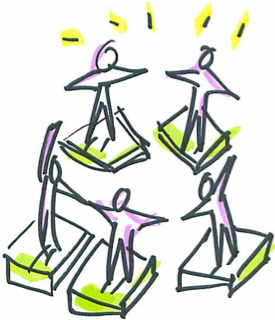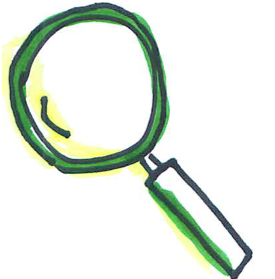Retrospectives Make Better Product Outcomes
Frustrated with the outcomes of your products? Are you, as a product manager, struggling with your development team? In my work as a product coach, achieving less than stellar product outcomes is all too common.
Surprisingly, the solution to better outcomes may be right under your nose. The answer is in retrospectives. To create and sustain a culture for creating better product outcomes, product leaders encourage and participate in product retrospectives. Retrospectives tap into the wisdom of the product community to continually learn and improve the product as well as the product development process.

Retrospectives are a simple, yet powerful tool that relies on transparency, curiosity, and learning. Mastering retrospectives need to be in every product manager’s toolkit.
What Is a Retrospective?
A retrospective is a reality-based learning experience resulting in action and change. A retrospective can be timed to happen regularly, such as at the end of iteration or sprint, release, or at some other regularly occurring event such as a quarterly roadmap review. It can also take place after an important occurrence such as a product launch, client sales meeting, or hypothesis test. Unlike a traditional meeting where information and status are shared, a retrospective generates new information and an agreement for action.
A retrospective is a ritual involving the product community. This community can include the development team, product team, customers, and stakeholders. The purpose is to review what happened for some timeframe, outcome, deliverable, or event. A retrospective review should do the following:

- Harvest the collective wisdom of the community
- Tell the truth without blame or judgment
- Identify what to appreciate and what needs to be improved
- Generate insights that could potentially benefit the product
- Commit to actions to improve, change, or try
Many product people think that retrospectives are focused solely on the team process and the quality of teamwork. That can be an opportunity lost. The best and most lasting product improvements happen when product people do the following:
- Actively engage in retrospectives
- Use retrospectives for more than the development team’s process
- Use quantitative product data as part of retrospectives
Let’s take each in turn.
Active Engagement in Retrospectives
Product development teams are widely familiar with retrospectives, popularized mainly because it is a key Scrum event. Development teams tend to use retrospectives regularly and product managers are involved—sometimes.
Product managers have a tendency to avoid retrospectives when the meetings are not well run or when there are issues such as problems with product quality. As a product leader, you have every right to point these issues out and seek ways to make them better. If there are deeper issues at play such as strained relationships, consider using retrospectives as a forum for mutual learning.
 I’ve seen development teams struggle when product leaders are reluctant to surface their concerns. Conversely, I have encountered product leaders who are disappointed or frustrated with their development team and avoid attending team retrospectives all together.
I’ve seen development teams struggle when product leaders are reluctant to surface their concerns. Conversely, I have encountered product leaders who are disappointed or frustrated with their development team and avoid attending team retrospectives all together.
Product leadership is about setting a safe environment for curiosity and transparency. Everyone should have the courage to discuss the undiscussables. By using the structure of a retrospective, which includes setting the stage with safety (See sidebar “Structure for a Retrospective”), a skilled and neutral facilitator can transition a team to become a high-performing product team. Now that is how retrospectives shine!
Use Retrospectives for More Than the Development Team’s Process
Retrospectives are useful for more than just iterations (sprints) or product releases. Retrospectives can be used to reflect and learn from an important event including as a product launch, customer or product research, hypothesis test, roadmap outcomes, customer sales meeting, or customer conference.
Your mileage will vary as to which events are most important for your product. Consider those that you do on an ongoing basis, and for which the stakes are high. Inject post-event retrospectives and engage the right people to get better the next time.
Using Product Data to Make better Product Decisions
Of the five steps in a typical retrospective, two of them (gather data and generate insights) require product managers to focus on product data.
Data includes both qualitative data (reactions, happiness, and so on) as well as quantitative data (code quality, technical debt, and defects). Meaningful quantitative data also includes information such as product usage and outcomes. This can include win/loss results, revenue and corresponding costs over a certain timeframe, marketing campaign metrics, hypothesis test findings, conversion rates, and HEART metrics (customer happiness outcomes, engagement, adoption, retention, task success).
Retrospectives Help Us Learn
For learning to stick with us, it must have immediacy, relevance, and self-direction. Retrospectives help us learn.
Immediacy means that you have opportunities to apply what you learn soon after learning occurs. This is based on the thought process, “I can remember it.” That’s why it’s important to time your retrospectives within days of the endpoint you are retrospecting.
Relevance means that the learning is important to us and that it applies to our current situation (“I care,” “I need it,” and “I can practice or test this now”). Plan your retrospectives around you and your team’s goals. Be sure to cover topics the team cares about.
Self-direction involves taking ownership and control of our own learning and making necessary changes (“I own it,” “I choose it,” and “I will do it”). Always include steps in the retrospective for everyone to decide and plan what needs to change and how to change it.
A Recent Interactive Retrospective Learning Experience
There is more to retrospectives than you might think. To have better product outcomes, product leaders must set the stage for psychological safety, learn who is best to facilitate retrospectives, determine when to use retrospectives, and establish appropriate timing and duration of retrospectives.
Our Agile Product Open community joined up with Boston Product Management on World Retrospective Day in Cambridge, Massachusetts, USA on Wednesday, February 27, 2019. That evening, we explored how product people can effectively use retrospectives. The event included mining data and wisdom from the participants and a simulation of a retrospective. We explored how to inject retrospectives into our product work.
To view photos of the event, visit our Meetup photos page. You are welcome to the retrospective summary resource we provided to attendees and Agile Product Open Boston community members.
How are you doing with using retrospectives for better product outcomes?

Leave a Reply